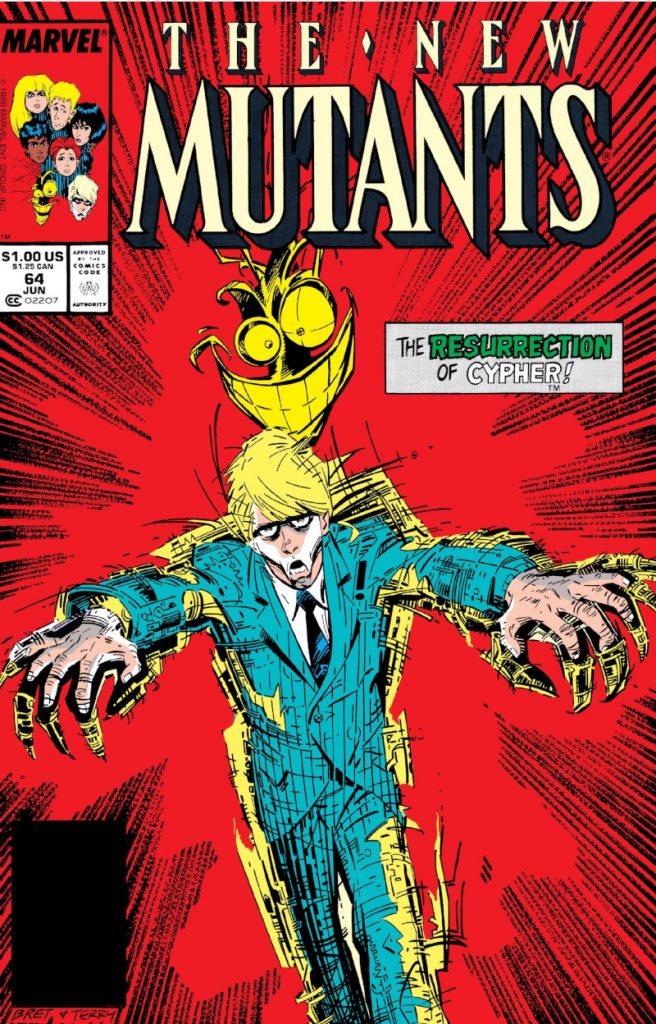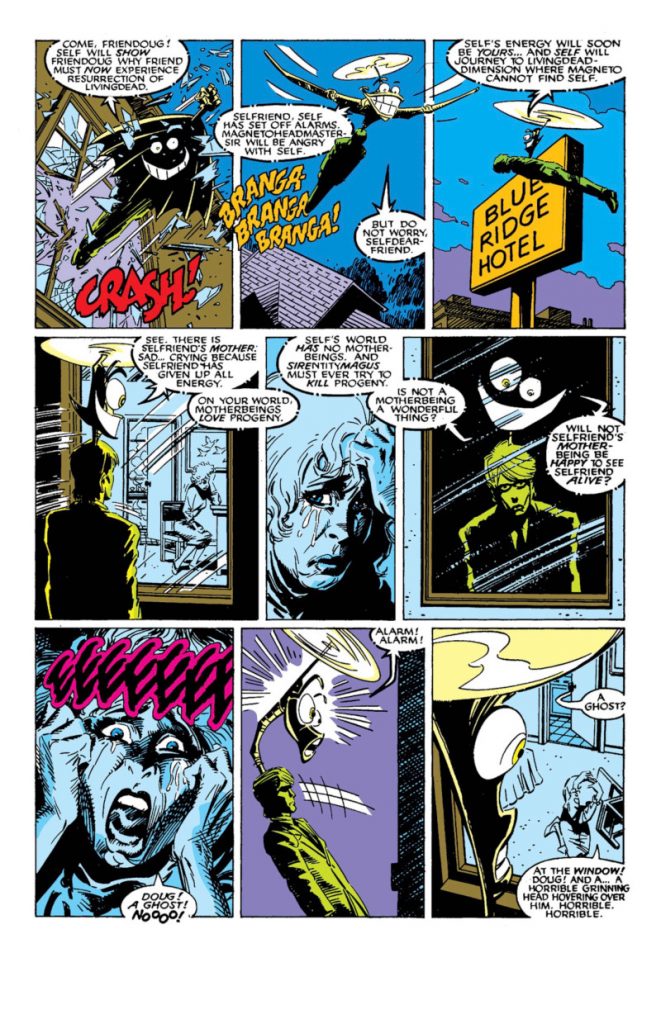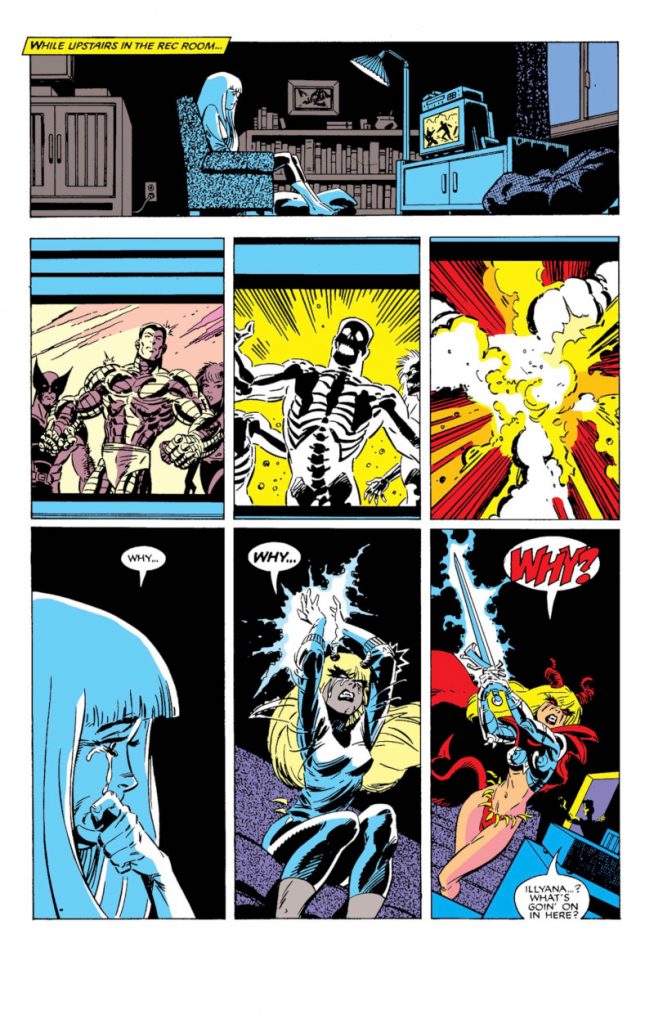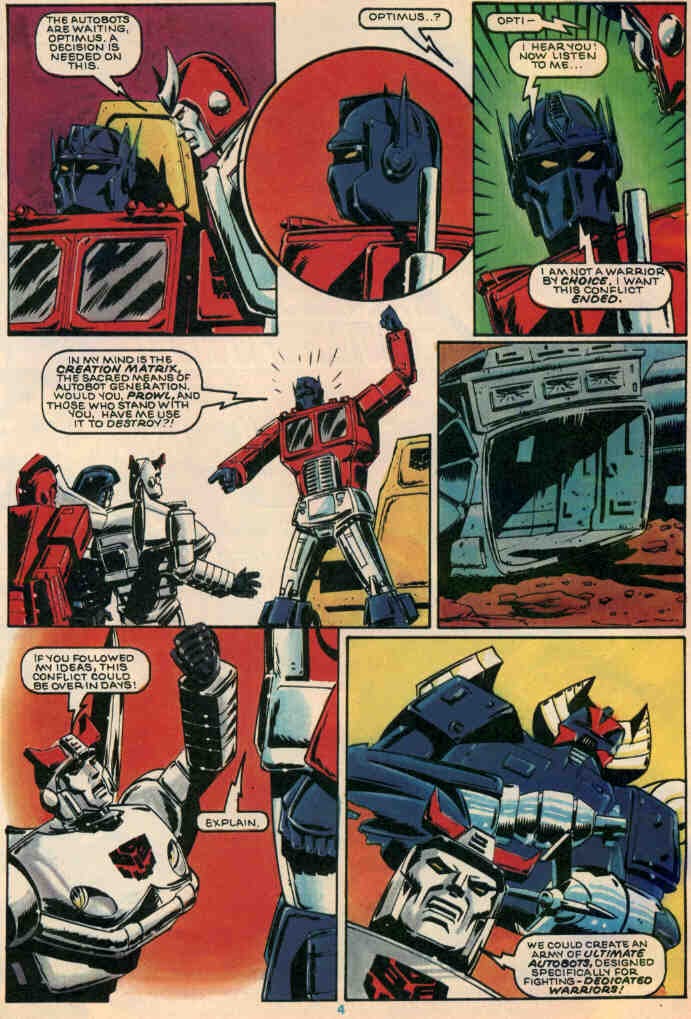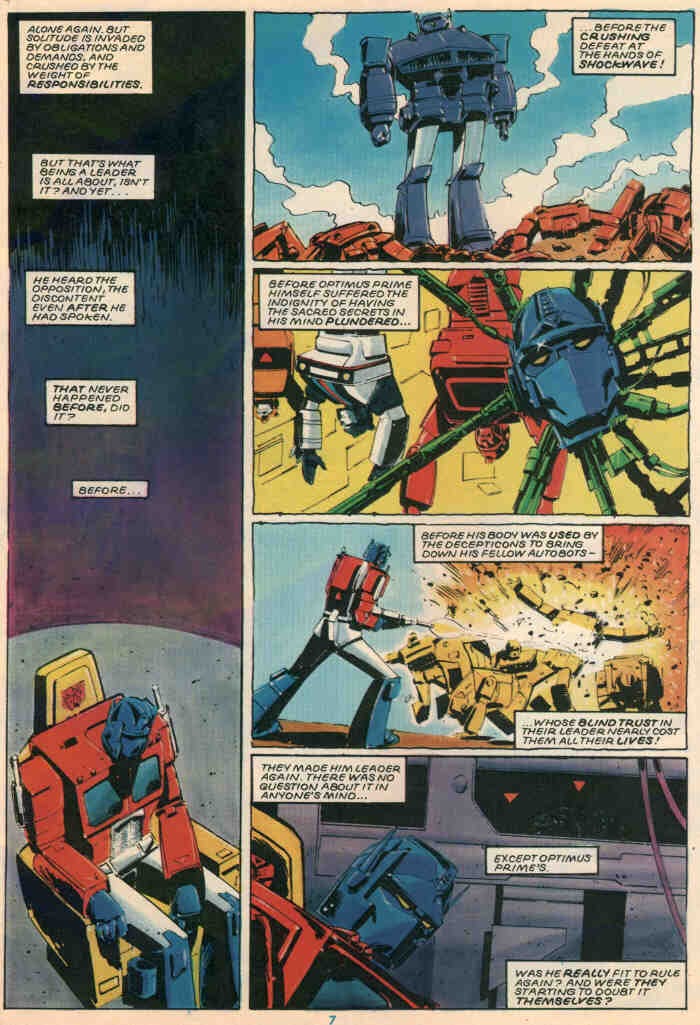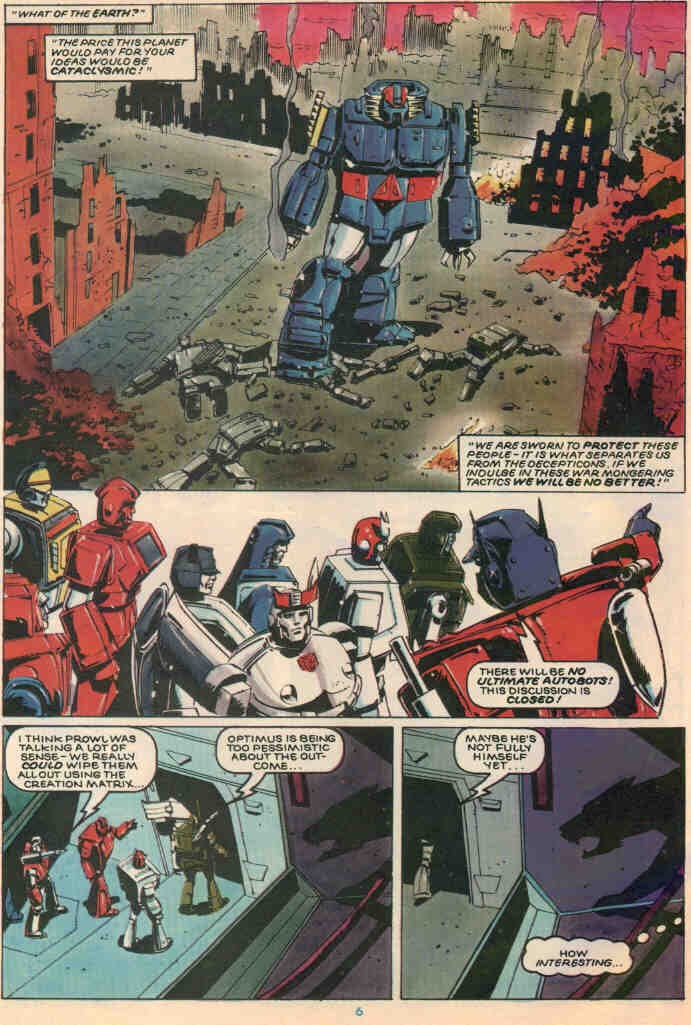The Comics That Made Them with John Allison
The comics you read and the comic experiences you have early on in your life often form the building blocks of your relationship with the medium. Obviously what you’ll enjoy expands from there, but for readers, those earliest experiences can be enormously influential on you going forward. It’s the same for our favorite creators. Some of those foundational elements can define the interests or views of writers or artists in the future. This interview column is all about those, as I chat with creators about five of the biggest influences and inspirations from the time before they were working in comics. This is The Comics That Made Them.
When you think of cartoonist John Allison, 1980s Marvel likely wouldn’t be the first thing you think of when you consider the inspirations for him and his comics. The guy who wrote Giant Days and Wicked Things? Who wrote and drew Scary Go Round, Bad Machinery, and Steeple? Who decided to go rogue and make his own crossover between the Giant Days crew and the Dark Knight himself, the Man O’ Bats?
And yet, it’s absolutely true! While Allison is a beloved, award-winning writer and artist of his own works, someone whose work often feels inspired by sitcoms as much as comic books, when I reached out to the cartoonist about chatting with me for this column, he quickly responded with a quintet of Marvel titles that were quite formative for him back in his youth of scouring covered markets and swapping comics with fellow comics obsessed pals. So those are what we discussed, as Allison joined me on Zoom for a lengthy morning/evening chat 4 about five comics that inspired him as both a fan and a creator himself.
It’s a delightful chat, and one that has been edited for length and clarity.
I’m going to start with Louise Simonson and Bret Blevins’s New Mutants run. As I was reading this, it felt like something that would have been formative for you in a way that maybe the others didn’t, both because Blevins’s art and Simonson’s writing. I see a lot of you there. Magik is basically Esther (de Groot, from Giant Days) to the group, but a level of goth Esther can only dream of. Is that the case? Was it formative for you?
John: There’s a bit of Magik in Charlotte’s hair. The blunt cut bangs. And there’s a bit of Magik in Esther, definitely. Yeah, the DNA of those issues is…when I went through them today, I was like, “Oh yeah, I can see all of it (in my work).” So definitely, yes.
What was it about Simonson and Blevins’s run that you connected with so much originally?
John: They didn’t look like other comics. I think we may have talked about this in the past, but I wasn’t getting complete runs of things. These comics came out when I was 11, and I had no access to comic shops. Whatever we got came through the newsstand, and not much from America came through there. Collected runs didn’t come through the newsstand. Whatever there was bulk of in America, perhaps a couple of months later, would get over to the UK newsstand. You’d go to a covered market and there’d be a box of US Marvel comics that perhaps you and ten other kids in the area knew about, and whoever got there first gets the issues of those comics.
You might end up with a sort of grab bag, an issue of Avengers and an issue of New Mutants. It might not have been a good issue of New Mutants. Maybe some Silvestri X-Men. So whatever you got when you said you’re getting that box was pretty random. So, when you found something that you really liked, it would immediately be like, “This is what I like. This is the thing.” And that’s how I would have found New Mutants in there.
I must have known about the characters because when Secret Wars came out in the US, there was a UK reprint version. So you could just buy every issue of that. Then there was Secret Wars II, and Secret Wars II contained every issue of the Secret Wars II mini-series, and every linked comic that crossed over into it. It came out weekly and ran for, I don’t know, it could have been 40 or 50 issues. So you get an issue of John Romita Jr. Uncanny and you perhaps got a New Mutants. You get an issue of Dazzler, because at one point, the Beyonder falls in love with Dazzler, doesn’t he? You get a (taste) of the US industry in this one reprint title that we’d never really had before.
You get odds and ends of things as backup strips. But here you got to see the whole of US Marvel in 1985 or ’86. That would have been how I first saw the New Mutants.
That’s wild.
John: Yeah, so we only really got the…I don’t know whether you call those crossover issues the best, but it was a strong run, usually. Marvel was strong in the mid-’80s, there were a lot of good artists coming through, so we got some really interesting comics. So I went to the market and started picking up the US Marvels. And New Mutants? The Bret Blevins issues? I mean, Bret Blevins doesn’t draw like anybody else working for Marvel at the time. He’s more animation-driven.
We’d recognize his style in people now. That style’s common now. You could look at anybody, from Vera Brosgol to even someone like Erica Henderson, who is part of that sort of school of expressive, bright, characterful superhero art. But it didn’t exist in the same way, I don’t think, at the time. I had another friend, actually, the kid who used to hoover up all the Bret Blevins comics because he lived closer to the market.
He could go in and get them. So I had to borrow them off him, if he deigned to let me borrow them. That was how I read those issues. But yeah, we could tell that this was different to what we were reading in other books. It was better than the rank and file Marvel books. And I was disappointed that there wasn’t that much Bret Blevins after that to get your teeth into, really. Because I think he left the industry quite quickly. He did Sleepwalker. He did a DC book, maybe a Superman book. He was probably more appreciated outside of comics , because he didn’t fit into the early ’90s style at all.
It seemed like he was. I was actually just reading about him before we started talking. It seems like he was out of comics by 1998, and at that point, moved into animation, although that was also a limited run. I’m not really sure what he is up to these days. But I do have to ask about that reading experience. I know there’s a lot of times, understandably, it seems like comics, particularly superhero comics, can be difficult to jump into. I remember when I was a kid, I just jumped into whatever was in front of me, basically because it was the only option. It seems like you had, or really all the people in the United Kingdom had that experience on steroids.
Between the reprints, where it was one story in the front and then another story in the back and where you’re just getting the US ones randomly. Whatever you get, I imagine a lot of your reading was hit or miss. You would read one issue, and then you’d read another one two issues later, maybe. It was never very consistent.
John: It wasn’t. Like I said, if a friend had money and they were able to get to the comic shop, you might get to see a run of issues. That was perhaps 20 miles away. When you’re 11, it might as well have been a hundred miles away. No one’s going to take you there. I did get to read the Marc Silvestri and Chris Claremont X-Men issues, because my friend got those, and he was getting odd issues of X-Factor at the time, and things like that.
But yeah, you had a spotty experience. But because Marvel UK was editorializing with this stuff, they’d also sometimes make sure you only got to see the good stuff. We’ll talk about Geoff Senior and Transformers UK later, but the backup strips in that would often be the best of what was coming through Marvel, which often seemed mildly appropriate for the audience for a toy tie-in. The first Rocket Raccoon limited series was the backup strip in Transformers, I think. It was drawn by Mike Mignola, so I was exposed to Mike Mignola’s work early, which was pretty exciting. And he was a different sort of artist back then, but not that different.
That was pretty exciting to see, as well. But we were clearly being fed things by an editorial team who were thinking, “This is the good stuff. We’ll put a bit of this in. This is about right to put in a limited series.” There was an Iceman limited series, again, which was quite an interesting comic. And I remember that showing up in the back of the Spider-Man UK reprints. So we got the weird stuff that worked, that fit into the post-Alan Davis Marvel UK landscape.
I do think that one thing that’s interesting about this run is, if you read comics from the ’60s, they feel so different to the point where…this is not me slandering comics from the ’60s, but they’re much more heavily written than today’s comics are. Reading this run, though, ’80s comics obviously age a little bit better, because the distance is shorter. But on top of that, they’re very influential. That was a very influential decade, because a lot of the writers who are writing now or prominent now, came up during that period. Reading this run today, it feels like a comic of today.
It just doesn’t really feel like a superhero comic of today.
John: No. I’ve got one on my desk. I’ve brought one, so that I can just go through it, because I agree with you. There are a few things in here that I pick out, that make this comic different to any other comic, even the other ones that I mentioned.
It almost feels like it could be a Webtoon today.
John: Yeah, it’s concisely written. I think Louise Simonson is the best. I know this is controversial, but I think I said this, maybe on Jim Rugg’s Patreon the other day. I went back to check that I wasn’t just talking through the top of my head, but I don’t think I am. I think Louise Simonson, technically, is the best writer of that period of comics. Because she’s concise and she so rarely gets bogged down in exposition. You can tell at that time at Marvel, they had to explain what had happened in the previous issue early on.
Even in those Ann Nocenti Daredevils, Daredevil will reiterate what his power is and what happened in the last issue while he’s thinking…while he’s brooding, shall we say. But I don’t see that in these Louise Simonson comics. I mean, obviously, Walt and Louise, that’s a real powerhouse of comics household, and they must have had constant discussions about what worked and what didn’t. And they clearly have things that they both agree on, because I looked at some Louise Simonson X-Factors, as well. And they’re so briefly written compared to the Chris Claremont comics at the time. It’s not underwritten. It’s not Frank Miller. But in terms of word count?
Yeah.
John: She’s being very brief, yet it gets everything across. You need a good artist to do it. She was working with the most emotive artist working at the company, probably. Bret Blevins was doing a lot of the work, but almost nobody was doing faces, characters, and expressions like this. Now this is common. But at the time, it definitely wasn’t. Ron Lim wasn’t drawing faces like this. The mid-ranking Marvel artists weren’t drawing like this.
They didn’t know how to draw like this, or their styles precluded them from drawing like this, because of what they were omitting to get those very graphical, David Mazzucchelli, John Romita Jr., very harsh graphic lines.
Poor Ron Lim, catching strays in this conversation.
John: I feel bad. But when I was looking through the Daredevils, there’s an inventory issue with Ron Lim drawing it, and it’s in-between John Romita Jr. issues. And Ron Lim is not a bad artist. He can doubtless outdraw me (laughs), but he’s rubbish compared to these guys. He’s a great artist. But he’s from a different school, completely. He’s getting the job done.
What issue did you have there?
John: This is issue #64. This is the famed Doug Ramsey funeral issue.
That’s the issue I have up right now. There’s one page that I think is a perfect example of it, where Magik is sitting in front of a TV, watching her brother, basically, blow up over and over and over.
John: Yeah.
She says three lines in it, and then, Bobby (Da Costa, aka Sunspot) runs in, and is basically trying to help, but he barely says anything, too. It lets the art do the talking even compared to Walt (Simonson)’s stuff. You read his Thor run from back then, which is great, but sometimes you have to explain things. And this one, it feels like with New Mutants, everything they were doing was pretty big on the emotion side. Which is fitting given the age group. That age is all big emotions.
John: Yeah. The more human the story, the less you need to explain, and that’s why this is probably my favorite comic book that I own. It’s the absolute keystone of everything that I do, because the less you get bogged down in the minutiae of the universe…they could do it in this issue, because they don’t have to deal with anything, except their friend is dead.
Yet it manages to run the gamut of everything. It’s tragic. Yet, it’s got this almost morbid… Warlock is flying around with the corpse of his best friend. He holds it up at the window in front of Doug’s mother, thinking, “She’s going to love this.” Obviously, she’s on the floor, because there’s her dead son and this ghastly face floating above it. Is there a more horrific moment, really? Is that more horrific than destroying the planet? That’s a moment of such brutality.
Yet it’s in this teen-focused book and it’s perfect, as well, because kids are watching Night of the Living Dead, and things like that. This is the kind of horror that really captures the teen brain. I think it’s a masterpiece. It’s not an easy comic to read, I don’t think, and some people don’t like it. I’ve recommended it in the past, and people were like, “Well, I didn’t like that at all, it was too much.” But I think it’s a master stroke.
When I went to go read this, I started with #64, I got a page into it, and then I decided to go back to the beginning of the run, and then just read to there. I do wonder if you started with #64 when you first read New Mutants, if it would have seemed weird or jagged.
John: That is the first issue that I read. (laughs)
Is it?
John: Yeah.
Oh my god. That’s amazing.
John: That’s the one that I got at the market stall, yeah. Then we filled in the gaps with Bird-Brain, and things like that. We filled in the gaps from the earlier issues, at least what we managed to. I’ve lost those issues. I couldn’t find them. I haven’t got Marvel Unlimited anymore, so I wasn’t able to go and research. So I’m relying purely on my memory of what they were like and reading them about 10 years ago.
I have to say, one thing that surprised me about it is, going back and rereading it, and seeing Doug Ramsey’s death. That is such a bold choice from today’s perspective, to have one of your main characters die in what normally would be a non-major arc for other titles, this story of Bird-Brain going to back to help his people. It’s interesting to look at it through the microcosm of today, where something like this would almost be impossible, because it would be so hyped up or it would have to be saved for an event or something like that.
I don’t think you’re up to date on the X-Men stuff, but now they’ve made it so it’s impossible for characters to be permanently dead.
John: Well, that’s probably quite a good idea. It’s a lazy device.
It is.
John: Just killing characters. I mean, obviously, it’s fundamental to superhero comics that death is a door that you go through every once in a while. But at the same time, it cheapens the experience for the long term reader, because you know they can come back, even Doug Ramsey.
When Doug Ramsey came back…I was probably a teenager when he came back. I think he merges with Warlock, to become…
Douglock.
John: Douglock? But I really like Doug Ramsey. He was the reader proxy in New Mutants, because his power is not physical. He’s the, “If I was here, this is what would happen to me.” So when he was Douglock, it was, “No, that isn’t my Doug Ramsey.” It was almost a checking out point of comics (for me). This New Mutants issue was where I checked into buying monthly Marvels, and the Douglock thing was, “Oh no, this is cheap.”
It cheapened it. That was schlock. But this was as far from schlock as possible.
It is interesting looking at death in a comic like this versus the resurrection thing. There wasn’t anything cheap about Doug’s death. Resurrecting him definitely was. But the way that Louise and Bret handled it was just…it’s such an impactful moment. Especially considering the fact that no one noticed that he died at first, or that he was shot.
John: No, they don’t, do they?
It’s sad.
John: They turn around, and he’s gone down, yeah.
They’re just, “Oh, he’s hiding in the corner, because he doesn’t have powers,” and he’d actually blocked a bullet from hitting Rahne. And it’s just heartbreaking.
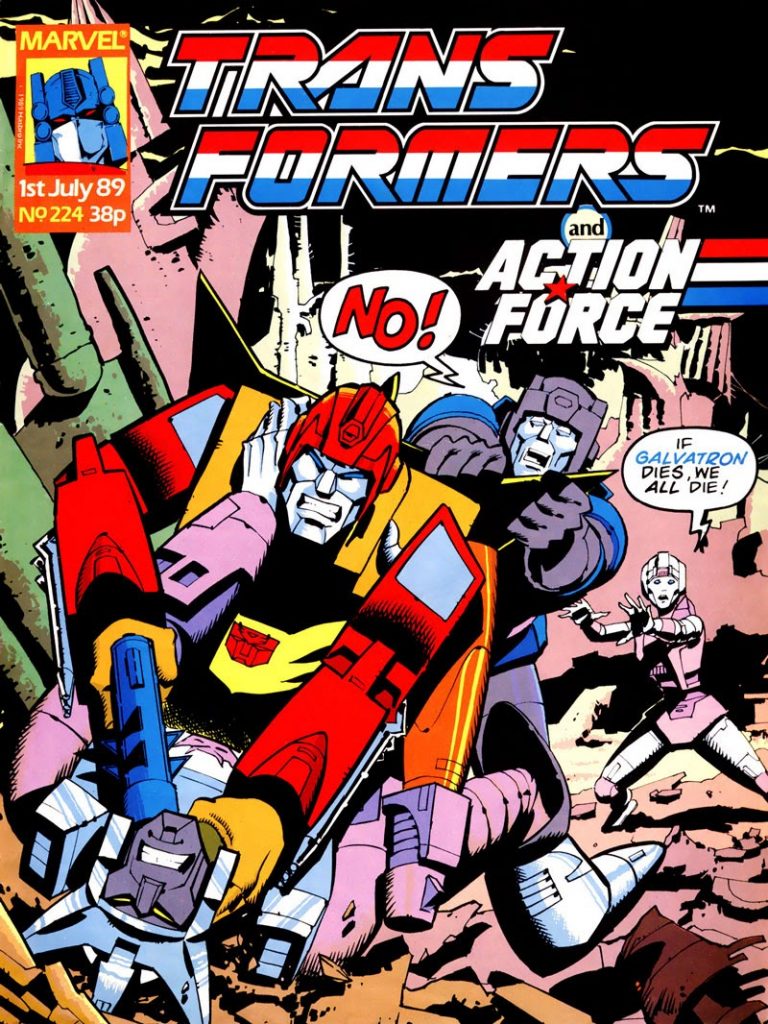
Let’s move on to the next one. You mentioned it already. It’s Geoff Senior’s art in Marvel’s Transformers UK from the 1980s. I have to say, Transformers were my thing when I was a kid. It was what introduced me to comics. Little did I know, when I was growing up, that I was secretly reading the less desirable version. Because I was reading the American version.
John: The Bob Budiansky version, yeah.
Yeah, Bob Budiansky, and Jose Delbo, and a whole bunch of other people.
John: Aw, Jose, yeah. God bless them, though. They put in yeoman work, I have to say. I’ve got a lot of fondness for them.
I wouldn’t be here today without that. However, everyone you talk to who loves Transformers…Simon Furman and Geoff Senior, that’s where it’s at. You don’t naturally strike me as a Robots in Disguise type guy, though.
John: No, but you know how kids are monomaniacal about things? Like, my nephew is monomaniacal about Pokemon in a way that many kids are. He knows the names of all the Pokemon. He knows all the evolutions.
My nephew loves dinosaurs. He knows all of them.
John: Transformers was my thing when I was a kid. Up until about the age 10 I guess I was sort of monomaniacal. Then one day, somebody says to you, “This is kid stuff.”And you’re like, “Oh.” Then it’s deep embarrassment and deep shame. And I’m easily scarred by embarrassment. So it was just, “Oh no, I’m checking out on this now. I’m moving on to be the adult pleasures of Spider-Man” or whatever.
But yeah, that was my thing. Transformers UK, I didn’t read it all the way through, but I certainly read the golden era issues. Then I broke from it. I didn’t have a lot of money for comics, so I had to be careful about what I was spending on. But then, when I started going to the comic shop when I was about 14 and I had a bit more money, I saw the US Transformers in there. And I’d only ever owned one issue of that. But it was strong medicine to buy a US issue, because they were well in the future of where we were in the UK, so you were going to get mega spoilers. But the one issue I owned was the issue where they go to Cybertron and Blaster goes into the smelting pool.
It was basically outside the continuity that I was reading, and it was a total mind blower. It was like, “Oh.” If you could have a better experience of accidentally spoiling it for yourself, it would be this, kind of, “Oh, and here’s the parallel universe you never knew about” story. It was like in Fringe when they go to the parallel universe. It took me places. I was a kid, and it took me places. But then, I started picking up the US Simon Furman run that Andrew Wildman and Geoff Senior tag teamed on. The final Marvel US issues. When the UK team had taken over the US title, which they do from about Issue 59, I think, I started to pick those issues up, as well, and fill in the gaps in my collection.
I have all of them still. They’re over there on my crazy wall of comics that I don’t want to show, because the shame will come. Actually, it won’t. I just can’t turn my laptop.
John: No, you’re too proud of that.
I am very proud.
John: You worked hard on that.
I did. But you shared three pages via email. You said, “The day I first read these was the day I became an art snob.” What was it about Geoff Senior’s art that fueled the art snob in you?
John: He was better than all the other artists and I could tell. I could tell that he was a lot better than any of the other Transformers UK artists. Apologies to people like Mike Collins, who I know, who did issues prior to that. He was better than the US artists. Because if you looked at those pictures…that’s painted art. That’s not machine colored art. The printing process was more expensive in the UK, and the color pages had a better finish. And his dynamism, and even that’s an early version of Geoff.
He gets a lot wittier as time goes on, a lot sharper and dynamic. But those panels where it’s Prowl is like, “Right, let’s sack this shit off. We’ll use the Creation Matrix. We’ll make just some massive fuck off robots, and we’ll just smash the shit out of the Decepticons.” And you get to see this. Again, I was nine. It’s like, “Ah, here’s a parallel universe you might enjoy, John, just gigantic brutal robots of an age you’ve never seen before, twice the size of anything you’re used to.”
I must have read it 10 times that day, because I could not take it in. And it’s all Geoff Senior. None of the other roster of Transformers artists at the time could have drawn what’s in that issue. It’s spectacular, especially for a kid. It’s just beyond anything. It’s beyond anything I had access to, this guy with this sort of incredible, powerful sci-fi vision. So that’s why I love Geoff Senior.
Optimus Prime is very unhappy about the Ultimate Autobots.
John: Oh, no that’s not for him, no. That’s very much not the Optimus Prime way. That’s not the Orion Pax we’ve come to know and love, building gigantic killer robots, even though he is one himself. (laughs)
Well, he’s a reasonably sized gigantic killer robot. Those would be world killers. I mean, when I initially looked at the top panel on the second page that you sent me, it’s like, “Oh, look. It’s a normal-sized robot.” Then I realized, “Oh, wait, those are much smaller robots underneath, which are definitely Decepticons. He’s got a smoking hand, which presumably is a gun. Then there’s buildings all around him that are just destroyed.” (laughs)
John: He destroyed everything. I love it. But that was it. That was also the first time I’d ever really read what the names of the people writing and drawing it were. Then the next time, and Geoff Senior, perhaps he did it, he may have done the next issue. But then, he only would do the odd issue, because he was painting the pages. He couldn’t do most of the issues.
When he came around, I was, “Oh yeah, Geoff Senior. He’s my guy.” And I thought, “Who are the other guys that I like?” when I notice an issue that seems better than the other issues? And I was able to pick out quite quickly the artists that I really like. That was sort of my entrance to the comics industry. That’s when I started to understand that this was a process that involved different people, and they all had their own kind of unique footprint.
Were you art-oriented when you were younger? Are you still art-oriented?
John: Yeah, I am. Comic writing, I say, it is more an active imagination than it is an act of great dialogue writing, usually. Whereas art is the thing for me, and I get on better with…just in comic shows, it’s the artist that I get on with. Comic writers are secret squirrels, for the most part. They don’t want to talk about ideas, because the ideas are the gold, whereas artists are very generous, and a good artist will share all their tips. Because in the end, you can’t steal from them. You can’t steal how good they are at drawing a hand.
Talking to Geoff Senior about his art wouldn’t allow you to paint like him on those pages.
John: No, it wouldn’t. I went to a Geoff Senior exhibition at OK Comics, and I went with Nick Roche, who obviously works for IDW all the time.
I was going to bring Nick up.
John: Yeah. I mean, obviously Nick and I have bonded over a lot of things. It’s funny, he’s maybe a couple of years younger than me, but we grew up on all the same things. All our tastes are basically the same. When we met each other, we went to the Geoff Senior exhibition at OK Comics. Then, because Nick was there, they got out all the stuff they hadn’t had space to frame. I was there with my nose pressed up against it (laughs), just trying to absorb the ink off the pages. Incredible.
I had a question that was, “Is this why you and Nick Roche bonded?”
John: Yeah.
That’s one of the things I think is amazing about any art sometimes, though, is sharing it with people and having those connections. You can say, “Geoff Senior,” and all of a sudden, you and Nick are like that moment in Step Brothers, where they’re like, “Did we just become best friends?” It turns out that sometimes, that is actually a thing that happens.
John: It does. Oh, it definitely does. That was a huge moment of connection, where you can just say, “This and this and this bit he’s doing here.” It’s pretty embarrassing, to be honest with you. We reverted to school boys. Like, “Look what he does with the leg when it’s in shadow.” What Geoff Senior does, that is part of what we were trying to do for all those years, what we were aping. The excitement on seeing the originals sometimes is palpable. Because it’s basically holy text to the kid within you.
This one was big, at least, in part, because it was the one where it almost helped you recognize that this was a thing that people did. That there was a process here. Did Geoff Senior’s art influence you in any other way?
John: He communicates emotion well. Some of the Transformers artists are better than some of the superhero artists at actually communicating emotion between characters, because they have to work harder because of those robot faces. When you see the issues of Transformers UK, when Galvatron fights Ultra Magnus, and Optimus gets the shit kicked out of him repeatedly, and his desperation, and the facial expressions…it’s perfect. He does great emotional work on a fairly difficult canvas. So yeah, absolutely.
But I can’t replicate a lot of what he does. I don’t work with the same sorts of characters that he does. He does a lot of sci-fi work, as well. But whenever I have to draw an action scene, I’ll pull up a Google Images of Geoff Senior and try and work out how to be dynamic, something I don’t have to do very often. Look at the angles, look at the way characters intersect, look at the way he uses solid blacks, when I find ways to work out how to do solid blacks, which took me about 20 years.
It was partly from trying to work out from Geoff how he does it.
subscribers only.
Learn more about what you get with a subscription

